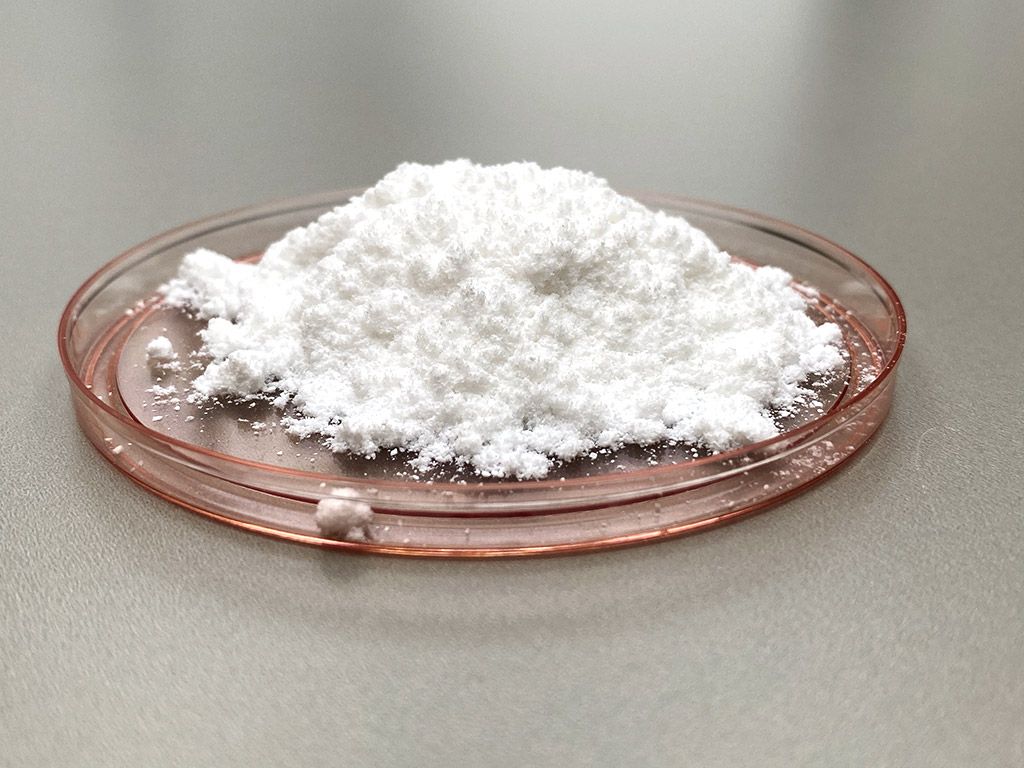HYALURONIC ACID
A natural molecule essential for our vision
Hyaluronan is a naturally occurring, biocompatible endogenous polysaccharide. Hyaluronic acid (HA) is a natural polymer with high molecular and exists in different forms. HA is the main component of the endothelial glycocalyx and is involved in cell transport. At homeostasis, hyaluronan is secreted from the cell and form pericellular or extracellular matrices. It is a major glycosaminoglycan of the extracellular matrix (ECM) and at homeostasis, extracellular HA is found predominantly in its high molecular mass form of over 1000KDa. During inflammation, HA is fragmented (molecular mass below 500kDa). HA fragmentation can result from degradation by reactive oxygen species (ROS) that are produced by neutrophils, or enzymatic cleavage by Hyaluronidase. For example, after cigarette smoke-induced chronic obstructive pulmonary, HA is fragmented in 70kDa fragments.
Hyaluronic acid has been shown to have differential signaling based on its molecular weight. Macrophages exhibit phenotypic diversity permitting wide-ranging roles in maintaining physiologic homeostasis. Macrophages undergo phenotypic changes dependent on molecular weight of hyaluronan that correspond to either pro-inflammatory response for low molecular weight HA or pro-resolving response for high molecular weight HA.
Chemical structure
Hyaluronic Acid is chemically defined as an unbranched Glycosaminoglycan, it is composed by repeating units of D-glucuronic acid and N-acetyl-D-glucosamine that give the molecule a high polarity and, consequently, high solubility and the ability to retain large volumes of water. It is a polymer normally present in ocular fluids and in the extracellular matrix, so its use like tear substitutes is highly tolerated and it doesn’t show cytotoxicity phenomena. The concentration of HA in human tears ranged from 12 to 1900 ng/mL.
Hyaluronic Acid is larger than the other glycosaminoglycans and is less highly charged, which results in reversible changes in morphology under varying physiologic conditions. HA chains contract with the increasing ionic strength and decreasing with pH. Moreover, it also shows strong water retention properties, due its strong anionic nature, the structure of HA chain acts to trap water. One source estimates that HA may retain water up to 1000 times its own weight.

Hyaluronic Acid production
In the past, Sodium Hyaluronate (HA) is obtained by animal source (from bovine vitreous, rooster comb or umbilical cords). The method was exepensive, quantities were limited and the final product canned contain protein impurities. Today it is obtained by biotechnological synthesis, which originates mucomimetic solutions, with optimal lubricant properties due to the viscosity of the solutions that result in a moisturising effect and stabilization of the tear film. The Hyaluronic Acid produced by bacteria (Streptococcus equi and Streptococcus zooepidemicus) infact is obtained in larger quantities and through a more efficient and cost-effective process. Recently, a new industrial process for HA production using Bacillus subtilis has been delevoped.
Ophthalmological use of Hyaluronic Acid
In ophthalmology, HA is widely used for its viscoelastic and hydrating properties and its excellent biocompatibility. The HA provides mucomimetic and viscoelastic properties to the solution, ensuring adequate lubrication of the ocular surface and protecting it from friction caused by wink and eye movements, infact Sodium Hyaluronate is a substance that originates mucomimetic solutions, with optimal lubricant properties due to the viscosity of the solutions that result in a moisturising effect and stabilization of the tear film. HA is pseudoplastic, with non-Newtonian rheological characteristics: its viscosity varies as a function of the shear force exert on it. So, HA is viscous in order to adhere itself, but its resistance dimishes under the friction of blinking. The polymer, moreover, is able to retain water and simultaneously interact with the eye epithelium, so the solutions containing HA maintain properly humidified the ocular surface and increase the stability of the pre-corneal tear film that protects it from environmental hazards. The viscosity of HA depends on the molecular weight and concentration of HA, the greater is the viscosity. High molecular weight HA has a reparative effect on the ocular surface, stimulating epithelial migration and inhibiting the expression of proinflammatory mediators such as interleukin Il-6 and IL-8. The viscosity of an ophthalmic formula is essential parameter because it influences the efficacy of the formula, as this provides its ability to lubricate.
Bibliography:
• Comparison of hypotonic and isotonic solutions containing sodium hyaluronate on the symptomatic treatment of dry eye patients. Papa V, Aragona P, Russo S et al., 2001. Ophthalmologica 215, 124-7.
• The pathology of dry eye: the interaction between the ocular surface and lacrimal gland. Stern ME, Beuerman RW, Fox RI et al., 1998. Cornea 17, 584-9.
• Characterization of water retentive properties of hyaluronan. Nakamura M, Hikida M, Nakano T et al., 1993. Cornea 12, 433-6.
• The where, when, how, and why of hyaluronan binding by immune cells. S. S. M. Lee-Sayer, Y. Dong, A. A. Arif, M. Olsson, K. L. Brown and P. Johnson Frontiers in Immunology April 2015, Vol. 6 Art. 150
• A review of hyaluronan and its ophthalmic applications. M. J. Rah American Optometric Association (2011) 82, 38-43.
• Combination of hyaluronic acid, carmellose and osmoprotectants for the treatment of dry eye disease. A. J. M. Orobia, J. Saa, A. O. Lorenzo, J. M. Herreras. Clinical Ophthalmology 2018: 12, 453-461
• High and low molecular weight hyaluronic acid differentially influence macrophage activation. J. E. Rayahin, J. S. Buhrman, Y. Zhang, T. J. Koh and R. A. Gemeinhart. American Chemical Society Biomater. Sci. Eng., 2015, 1, 481- 493.



